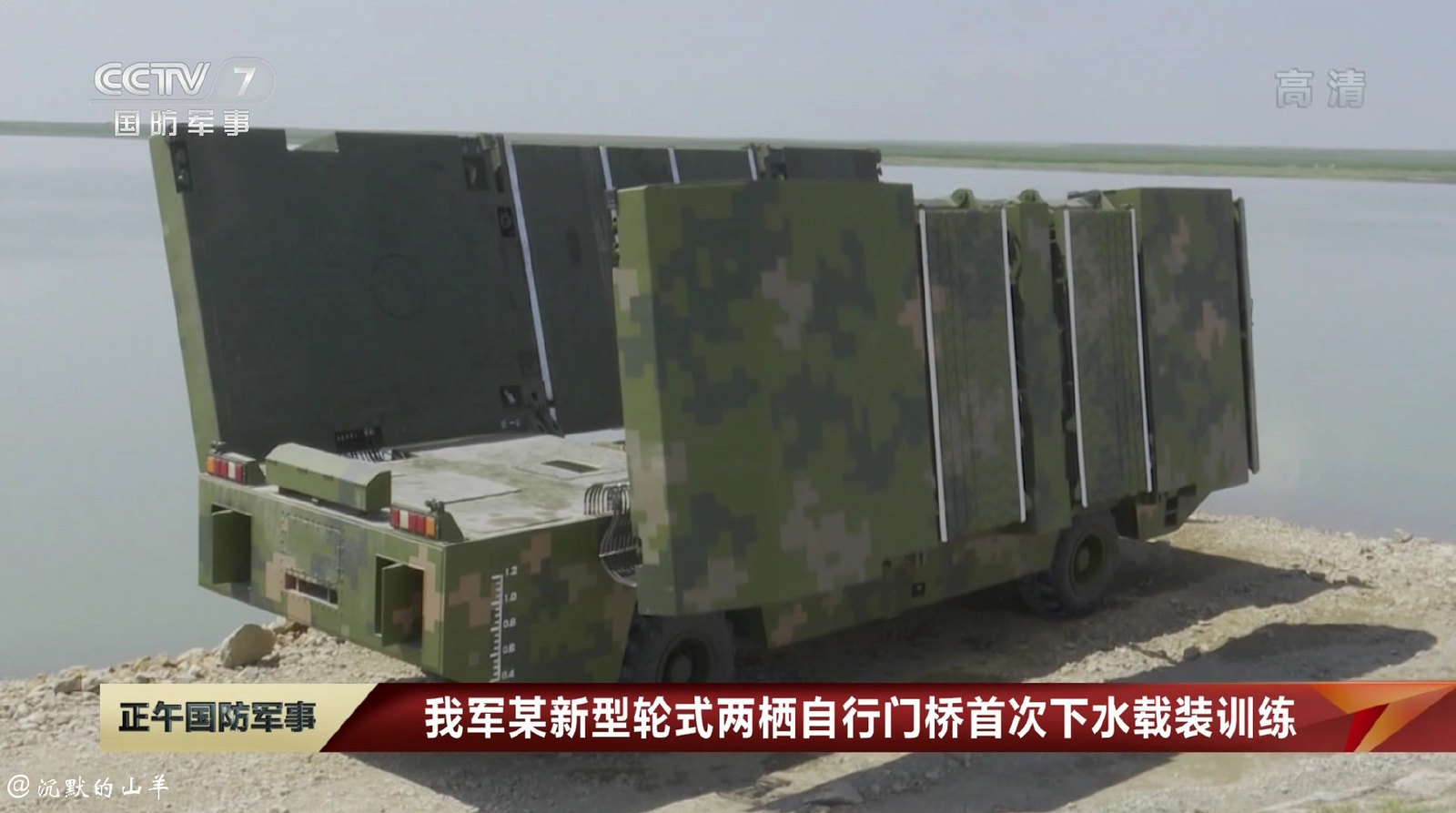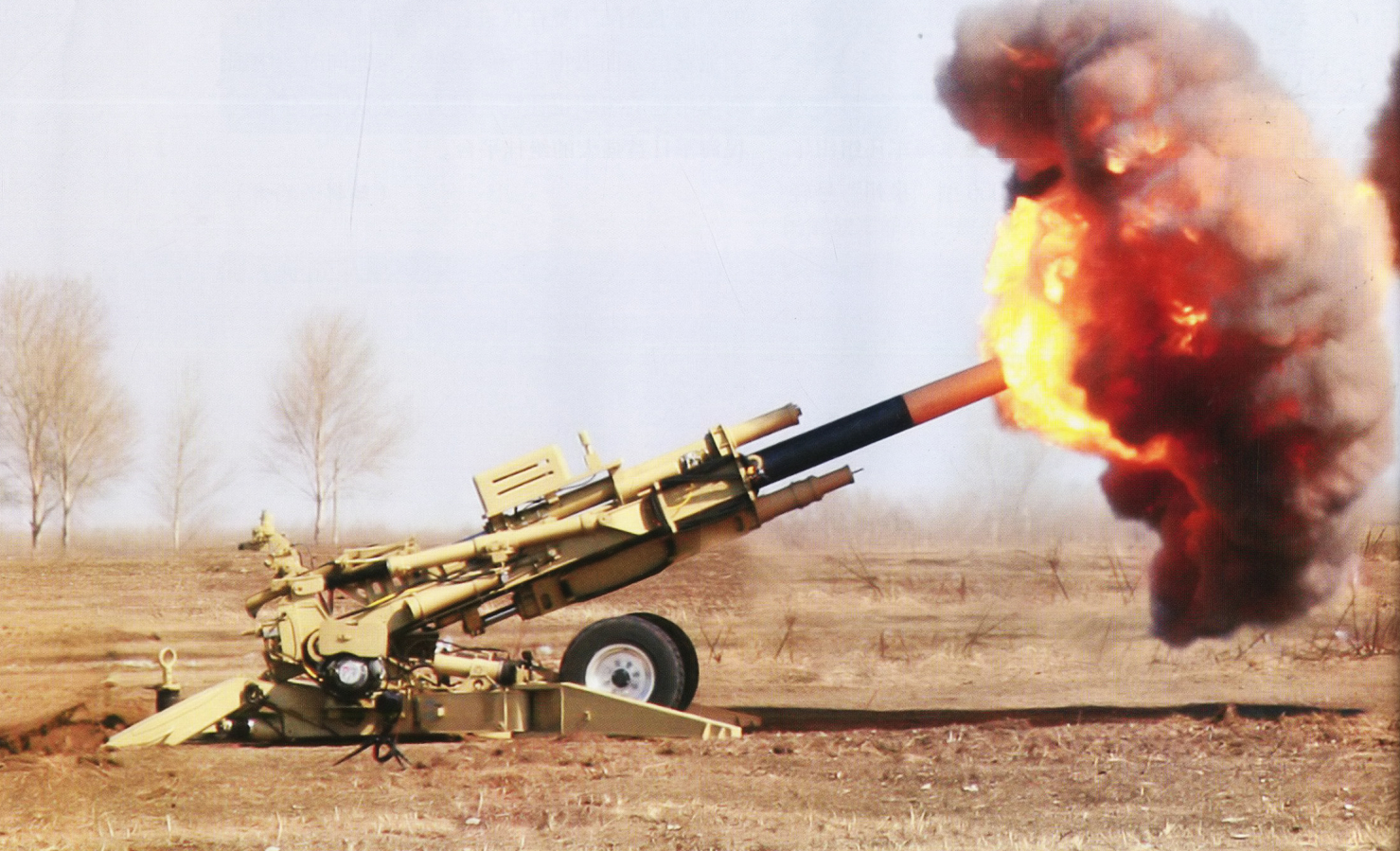You are using an out of date browser. It may not display this or other websites correctly.
You should upgrade or use an alternative browser.
You should upgrade or use an alternative browser.
PLA Ground Forces news, pics and videos
- Thread starter Jeff Head
- Start date
Substituting quality steel with inferior steel 1) doesn’t give you enough profit margin for corruption 2) is an executable offense in the PRC and 3) somehow no users from the PLA army noticed the discrepancy. Sounds like BS cooked up by FLG.
Just wondering, how long is the bridge? And is it adjustable for rivers that are of different widths? Thanks.The new amphibious bridging vehicle in operation.





by78
General
Just wondering, how long is the bridge? And is it adjustable for rivers that are of different widths? Thanks.
It's not adjustable per se. For wide rivers, they link several of these abreast to form a continuous bridge (see image below). They can also be used like a ferry to carry vehicles and supplies across a body of water.

When they do link them, I wonder if they can do it at the ends of the folding arms/tracks?It's not adjustable per se. For wide rivers, they link several of these abreast to form a continuous bridge (see image below). They can also be used like a ferry to carry vehicles and supplies across a body of water.

Would be more efficient as you’d obviously need fewer to ford a wide river - with the trade off being extra weight from stronger folding arms. Perhaps prohibitively so?
plawolf
Lieutenant General
When they do link them, I wonder if they can do it at the ends of the folding arms/tracks?
Would be more efficient as you’d obviously need fewer to ford a wide river - with the trade off being extra weight from stronger folding arms. Perhaps prohibitively so?
I’m not convinced that that picture of the two vehicles linking is them starting to build a bridge with these, and I am not sure that bridging vehicle is totally correct or appropriate.
These look more like mini ferries, and the picture of them starting to link two of them together is them building a bigger ferry out of two rather than trying to build a bridge with many of these all linked together.
Sure, you could potentially do that if you got enough of them in a pinch, but that would like American military levels of waste and overkill.
There are simpler designs for those sort of bridging missions, and most importantly, in those designs, the bridge elements are cheap metal add ons rather than integral parts of the vehicle.
That means you could build a bridge with just one or two vehicles (provided you had enough spare add on bridge modules, for which you should have plenty of spares bridge modules and dedicated mass conveyances for those modules for just that sort of long bridge building operation), and that once you have built a bridge, you can leave it in place and redeploy the bridging vehicle(s).
With these, not only are the vehicles themselves considerably more complex (hence expensive), to form a bridge with them would mean you are going to be tying up a lot of those when you have much cheaper alternatives. You will also have a much bigger logistical footprint of meeting xx number of these ferries instead of just one or two conventional bridge layers with a number of mass conveyances.
These are specialists vehicles designed to support small, fast, elite units rather than being something designed to get the main army across.
The vehicle is a boat actually. It can carry the load and float to the other side of the river.I’m not convinced that that picture of the two vehicles linking is them starting to build a bridge with these, and I am not sure that bridging vehicle is totally correct or appropriate.
These look more like mini ferries, and the picture of them starting to link two of them together is them building a bigger ferry out of two rather than trying to build a bridge with many of these all linked together.
Sure, you could potentially do that if you got enough of them in a pinch, but that would like American military levels of waste and overkill.
There are simpler designs for those sort of bridging missions, and most importantly, in those designs, the bridge elements are cheap metal add ons rather than integral parts of the vehicle.
That means you could build a bridge with just one or two vehicles (provided you had enough spare add on bridge modules, for which you should have plenty of spares bridge modules and dedicated mass conveyances for those modules for just that sort of long bridge building operation), and that once you have built a bridge, you can leave it in place and redeploy the bridging vehicle(s).
With these, not only are the vehicles themselves considerably more complex (hence expensive), to form a bridge with them would mean you are going to be tying up a lot of those when you have much cheaper alternatives. You will also have a much bigger logistical footprint of meeting xx number of these ferries instead of just one or two conventional bridge layers with a number of mass conveyances.
These are specialists vehicles designed to support small, fast, elite units rather than being something designed to get the main army across.

















